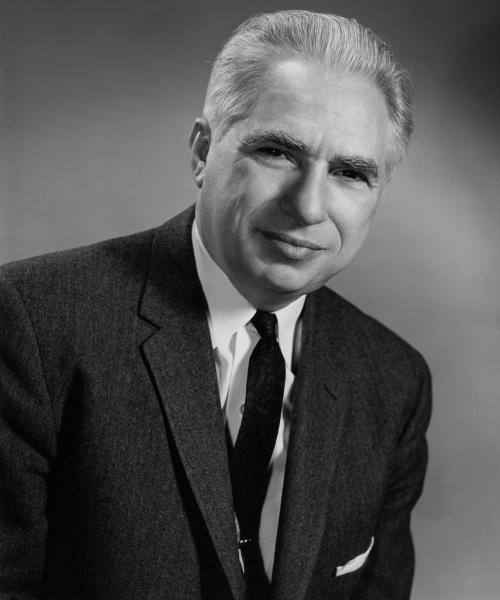

|
Leon Stein (September 18, 1910, Chicago - May 9, 2002, Laguna Hills, California) was an American composer and music analyst. For nearly a half century Leon Stein was an esteemed figure in the musical life of his native Chicago, enriching the community’s cultural vibrancy as a composer, conductor, teacher, author, champion of humanitarian causes, and devoted friend to many young and up-and-coming musicians. His was a career and a steady contribution in which both the Jewish and the general musical spheres of the city took great pride. Stein’s parents had immigrated to Chicago in 1903 from Bratslav, in the Ukraine. That year saw a marked upsurge in immigration from the Czarist Empire, fueled in part by the infamous Kishinev pogrom (in Bessarabia) and its aftermath. His father, a tailor and furrier by trade, was also an amateur singer who sang on occasion in synagogue choirs. The young Stein, too, sang sporadically as a boy chorister in local synagogues. That experience surfaced later in his academic Jewish musical interests as well as in many of his Judaically related compositions. Though his family, which followed mainstream observances and celebrations of Jewish life, was not orthodox in orientation, Stein later recalled the positive and permanent emotional imprint of the ethnically as well as religiously Jewish “feel” of their neighborhood, which always remained a part of his identity and consciousness as a creative artist. Stein attended
DePaul University, where he received his MM in 1935 and his Ph.D. in 1949.
He studied under Leo Sowerby, Eric DeLamarter, Frederick Stock, and Hans
Lange. Stein's compositions were modernist in character; his works for saxophone are his most popular pieces. He also wrote on music, particularly Jewish music. His manuscripts are held in the Richardson Library at DePaul. Stein refused to align himself with any particular musical movement in vogue at any one time, and he preferred to steer a “middle ground” between conservatism and progressive invention. “The term ‘pantonality’ best defines my musical language,” he explained in an interview, and he expanded upon how it applies to his music:
A keen thinker about the nature of music, Stein outlined in 1963 as his “composer’s credo”:
Stein was associated with the musical life of Chicago for half a century. A native of the city, he was born in 1910, and studied at DePaul University, where he taught for 47 years, ultimately serving as Professor of Music and Dean of the School of Music. He was also the conductor of the DePaul University Orchestra (1965-77), Director of the Community Symphony of Chicago (1945-65), Director of the City Symphony of Chicago (1964-84), and Music Director of Niles Township Jewish Congregation in Skokie (1956-66), having studied conducting with Frederick Stock and Hans Lange. He was the composer of more than one hundred published works, including four symphonies, two one-act operas, five string quartets, and numerous solo and chamber works. His music has been performed by the orchestras of Chicago, Boston, Detroit, and Cincinnati, among the more than 90 orchestras that have played his compositions, and his quartets were recorded by the Chicago Symphony Orchestra String Quartet. Stein was the winner of the American Composers' Commission Award Contest in 1950 for his Symphony No. 2, a work described by composer and critic Peggy Glanville-Hicks as music of "considerable power." Among his numerous awards and prizes Dr. Stein received both the Distinguished Alumni Award (1976) and the highest faculty award, the Via Sapientiae Award (1979), from DePaul University, and was inducted into the City of Chicago's Hall of Fame in 1982. He was also the author of The Racial Thinking of Richard Wagner, a book based on his doctoral dissertation, and the books Structure and Style and Anthology of Musical Forms. He was a member of the American Composers Alliance and the Society of Composers, Inc. Dr. Stein is
survived by his wife, Anne Helman Stein of Laguna Woods, California; two
sons, Robert of Grand Rapids, Minn., and Kenneth of Berkeley; and four
grandchildren. -- Portions of this biography are by Neil W. Levin, and were posted on the Milken Archive website. |
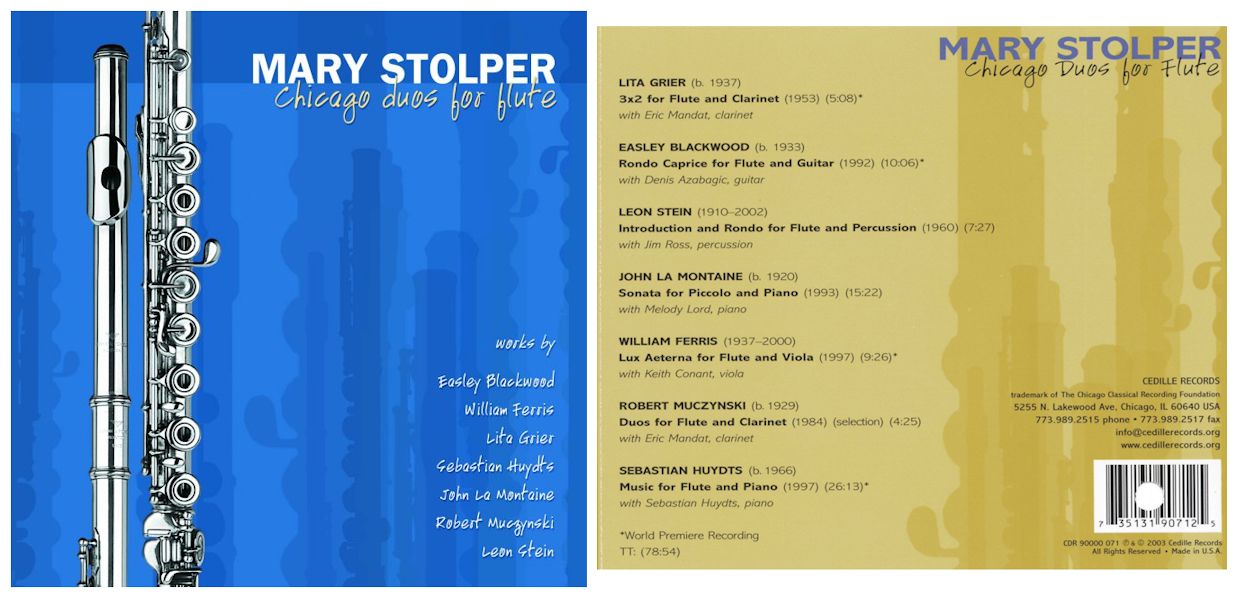
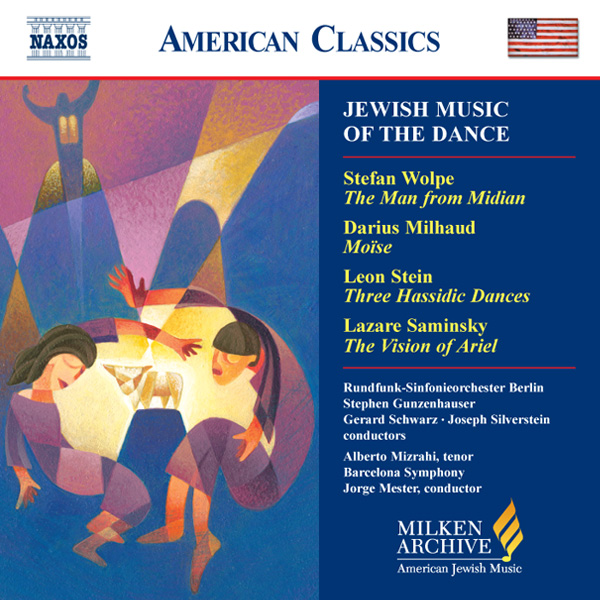 Bruce Duffie: You were at the DePaul University
for many, many years. What were the most significant changes
you saw over your tenure?
Bruce Duffie: You were at the DePaul University
for many, many years. What were the most significant changes
you saw over your tenure?|
Cecil Leeson (16 December 1902 North Dakota – 17 April 1989), was widely credited with establishing the saxophone as a legitimate concert instrument.
From 1926, he worked on occasion in various commercial groups in Detroit, and in Ohio. This included a bi-weekly session for radio station WHK. His approach to classical saxophone playing differed from jazz and dance saxophone music popular at the time, and helped promote classical saxophone style in a mainstream medium. A writer in the Hollywood News said that "in Leeson's capable hands, the saxophone [is] no longer the blatant jazz instrument of popular conception, but an instrument of really beautiful tone color [...]. If there were other saxophonists who could play as Leeson does, the saxophone would speedily make its appearance in the symphony orchestra." During the early 1930s, he joined the faculty at the Hollywood Conservatory of Music and taught there for several years. From 1934 to 1939, Leeson collaborated with American composer Paul Creston, resulting in several major pieces for the classical saxophone repertoire. In 1937, Cecil Leeson was the first saxophonist to play at Town Hall in New York City. He was also one of the first saxophonists to appear as a soloist with major American symphony orchestras. More than 50 works for saxophone were written for him by composers such as Leon Stein, Edvard Moritz, Paul Creston, and Ferde Grofé. Leeson taught saxophone performance at Northwestern University from 1955 to 1961 and then at Ball State University. His papers, and his collection of original Adolphe Sax and other famous saxophones are in the America's National Music Museum at the University of South Dakota [shown in photo]. The 2nd World Saxophone Congress in Chicago in 1970 honored Leeson for 50 years of pioneering and contributing to the establishment of the saxophone in the field of music. According to Stephen Cottrell, "Leeson's style of saxophone performance established in the United States a school of classical saxophone playing that differed from the European model." |
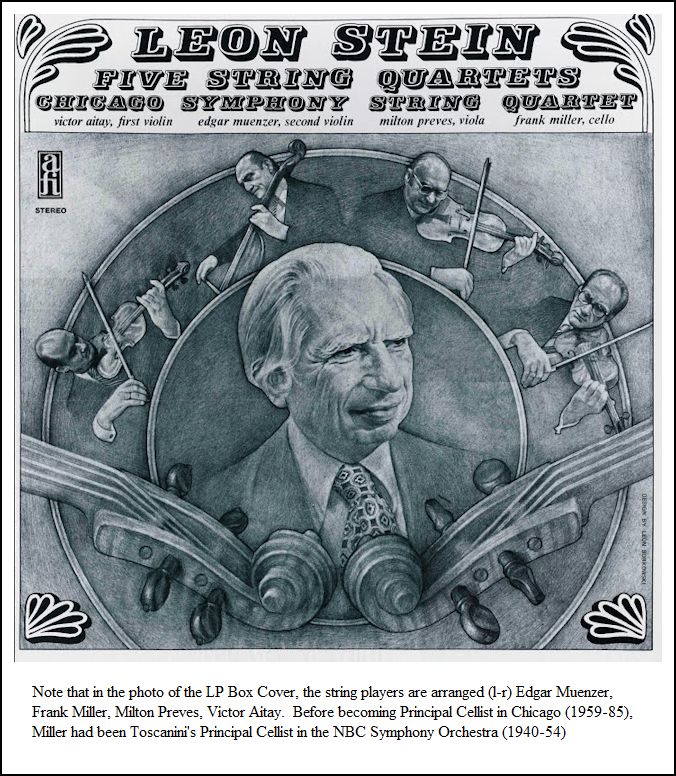 BD: That must be very satisfying
for you.
BD: That must be very satisfying
for you.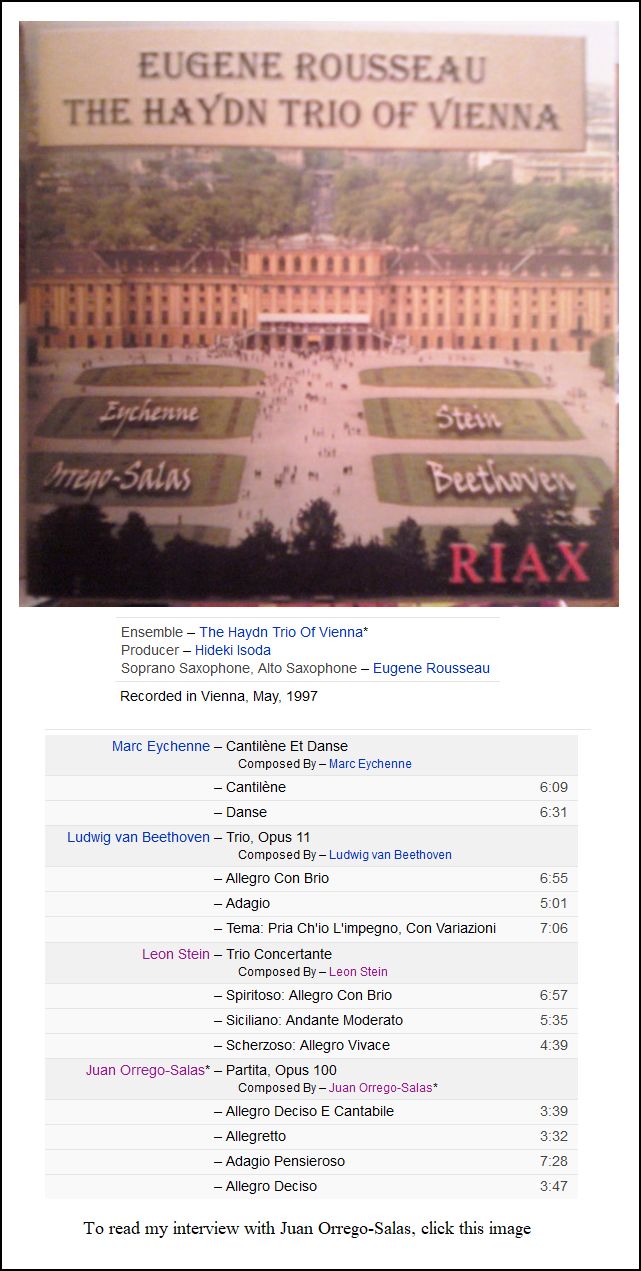 BD: [With a slight groan] Oh,
yes...
BD: [With a slight groan] Oh,
yes...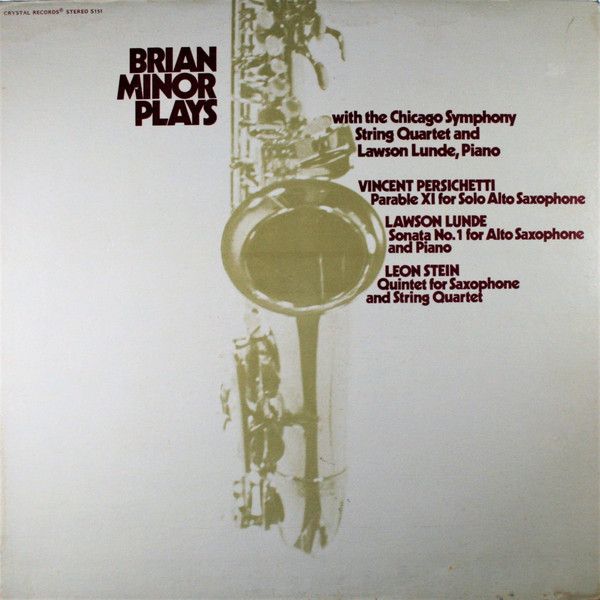 Stein: Yes, I certainly do.
It is a possibility, because I’m sure there are some schools which have
some courses approaching that now, and there is a growing realization
that there is this combination of qualities which is necessary. The
only thing, in terms of preparation, is to consider the relatively small
number of administrators who will get positions. There’s an economic
problem to be solved within the institution as to whether it would
feasible to have a degree course of that kind. But it is a factor,
where much of the essential information is gathered along the way, and
the main thing, which is very, very difficult to measure and to evaluate,
is not the capacity of ‘getting along’ in an avid sense, but the capacity
to work with individuals so that you can give them the best, clear-sighted
direction from your standpoint, and evoke the kind of cooperation which
makes an institution feasible, workable, and productive.
Stein: Yes, I certainly do.
It is a possibility, because I’m sure there are some schools which have
some courses approaching that now, and there is a growing realization
that there is this combination of qualities which is necessary. The
only thing, in terms of preparation, is to consider the relatively small
number of administrators who will get positions. There’s an economic
problem to be solved within the institution as to whether it would
feasible to have a degree course of that kind. But it is a factor,
where much of the essential information is gathered along the way, and
the main thing, which is very, very difficult to measure and to evaluate,
is not the capacity of ‘getting along’ in an avid sense, but the capacity
to work with individuals so that you can give them the best, clear-sighted
direction from your standpoint, and evoke the kind of cooperation which
makes an institution feasible, workable, and productive.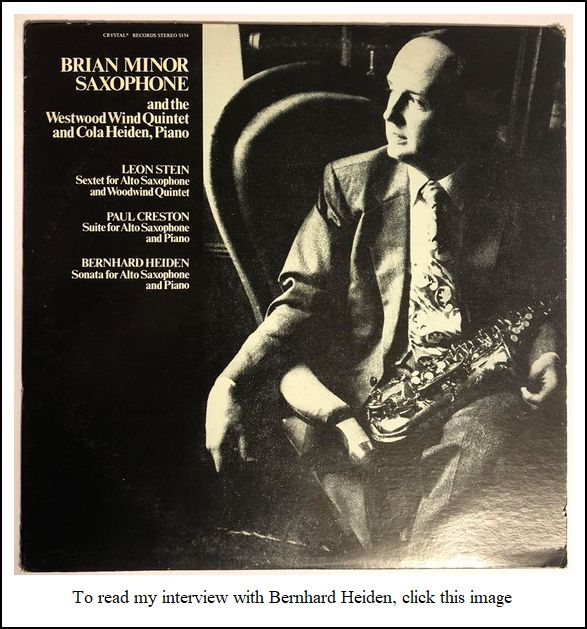 BD: Is ‘rock’ music?
BD: Is ‘rock’ music?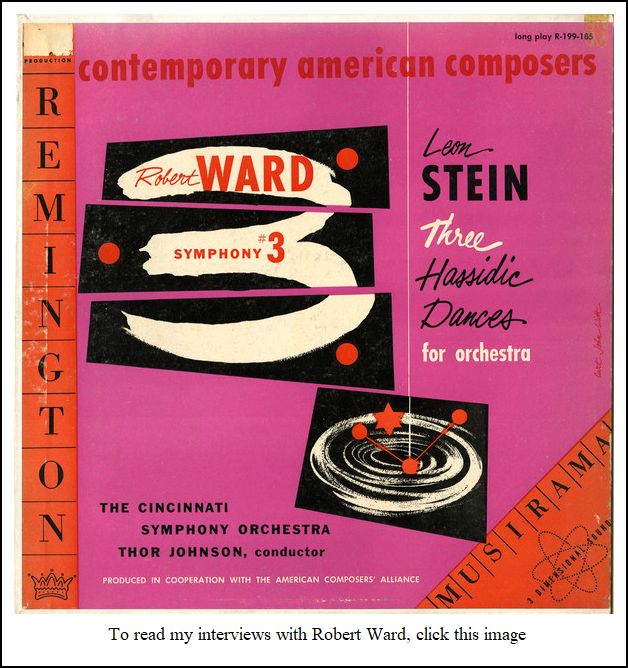 BD:
What is next on your calendar?
BD:
What is next on your calendar?
© 1988 Bruce Duffie
This conversation was recorded on the telephone on January 16, 1988. Portions were broadcast on WNIB in 1990, 1995 and 2000. This transcription was made in 2020, and posted on this website at that time. My thanks to British soprano Una Barry for her help in preparing this website presentation.
To see a full list (with links) of interviews which have been transcribed and posted on this website, click here. To read my thoughts on editing these interviews for print, as well as a few other interesting observations, click here.
Award - winning broadcaster Bruce Duffie was with WNIB, Classical 97 in Chicago from 1975 until its final moment as a classical station in February of 2001. His interviews have also appeared in various magazines and journals since 1980, and he now continues his broadcast series on WNUR-FM, as well as on Contemporary Classical Internet Radio.
You are invited to visit his website for more information about his work, including selected transcripts of other interviews, plus a full list of his guests. He would also like to call your attention to the photos and information about his grandfather, who was a pioneer in the automotive field more than a century ago. You may also send him E-Mail with comments, questions and suggestions.